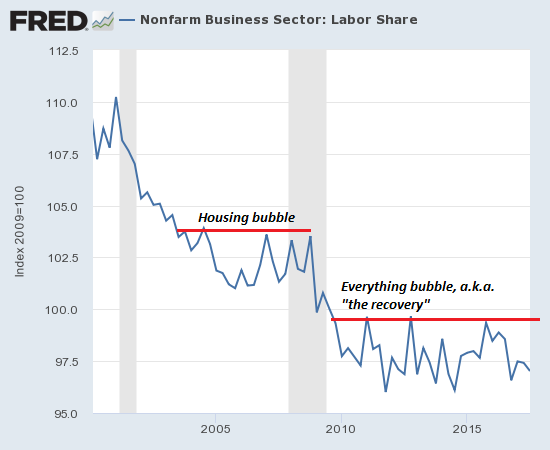Authored by James Howard Kunstler via Kunstler.com,
That crusty ole rascal, Gov. Jerry Brown of California, seems to be enjoying his sunset journey into Civil War Two or maybe the destination is more like Blade Runner (since we know that history only rhymes but does not repeat). Anyway, it’s not a good place.
The once-golden state begins to look something like what one federal official recently called — dare I say it? — a shithole.
A mix of used hypodermic needles, human feces, and other trash litters the streets and sidewalks in a large section of downtown San Francisco, a local news outlet reported Sunday night.
It’s a problem that has grown by epic proportions in recent years and has many concerned for the health and safety of some the city’s youngest residents….
— The Blaze
Yes, quite literally. This particular failure of the political Left started in the 1970s when states began aggressively shuttering their large mental hospitals. Many of these institutions dated from the late 19th century — ghastly old gothic revival warehouses for the mentally ill, fraught with overtones of abuse and neglect, scenes out of Vincent Price movies… lightning flashes through the barred windows… a scream in the night… hysterical laughter echoing down the dark, tiled hallways….
They were an embarrassment, for sure, and certainly an affront to liberal sensibilities. But, of course, they fucked up the remedy for that. Instead of replacing the giant old state insane asylums with smaller, better-managed institutions, they just released the inmates under the rationale that they were a politically oppressed minority group. And there it ended.
And so here we are, going on a half-century later, with an economy that manufactures failure and immiseration at a greater volume than its other finished products, and many more lost souls out on the city streets, and now we are an even more ideologically inflamed society than we were in 1973, with the ranks of intersectional oppressed minorities and aggrieved victim groups grown into virtual armies-of-the-night — and the mentally ill just lost in the crowd.
It never seems to occur to anyone that a mental hospital can be run humanely, at an appropriate scale, and that these poor, sad creatures might, at least, be better off there with a bed, a bathroom, and somebody to check in on them daily than they are wallowing in the gutters of San Francisco and other cities. Surely there are up-to-date models in other lands for this kind of caretaking — if maybe we sent a few bureaucrats overseas to have a look.
But that’s not how we roll in this exceptionally greatest of great polities. After all these years, it’s hard to avoid concluding that Americans just prefer melodrama to any other form of behavior, including problem-solving. Melodrama is colorful, fun, and absorbing. It’s just another kind of show business for a people conditioned to see everyday life as a TV series they star in. So kick back and enjoy the homeless show, because its more entertaining than doing the right thing.
Likewise, the sanctuary city show, a shamelessly sentimental exercise in virtue-signaling at the grand scale, larded with little bits of dishonesty, such as the tag “undocumented” for people here illegally, as though their status was the result of some clerical error. Gov. Brown declared war, more or less, on the federal government last week after a fracas in Oakland where mayor Libby Schaaf rode through town like Paul Revere crying that the ICE teams were coming to make arrests. That riled Attorney General Jeff Sessions enough to start filing lawsuits against this nonsense.
But the Department of Justice faces a big quandary. How are they going to make a big stink over enforcing US immigration laws while they ignore US drug laws vis-à-vis the twenty-nine states that have legalized marijuana use in one way or another? In a number of these states, marijuana production is now a major industry, with substantial political influence. AG Sessions has made noises about cracking down on the marijuana trade, but he hasn’t done a damn thing about it because he can’t. The state tax revenue alone is too large to be meddled with, never mind popular opinion.
If the AG had a brain in his head instead of the CB radio that’s implanted there, he’d realize that the answer is to lean on congress to de-list marijuana as a Schedule 1 Controlled Substance. Or to write a simple law leaving the question to the states. Of course, the intelligent thing would be to put an end to the melodrama called “The War on Drugs.” Just like the intelligent thing would be to place the homeless mentally ill in caretaking sanctuaries, call them what you like.
I really don’t see how Mr. Sessions can assert federal jurisdiction over illegal immigration without resolving the marijuana question.
* * *
Support Jim’s blog by visiting his Patreon Page
via RSS http://ift.tt/2DeLooe Tyler Durden





 Florida government Rick Scott
Florida government Rick Scott 






















